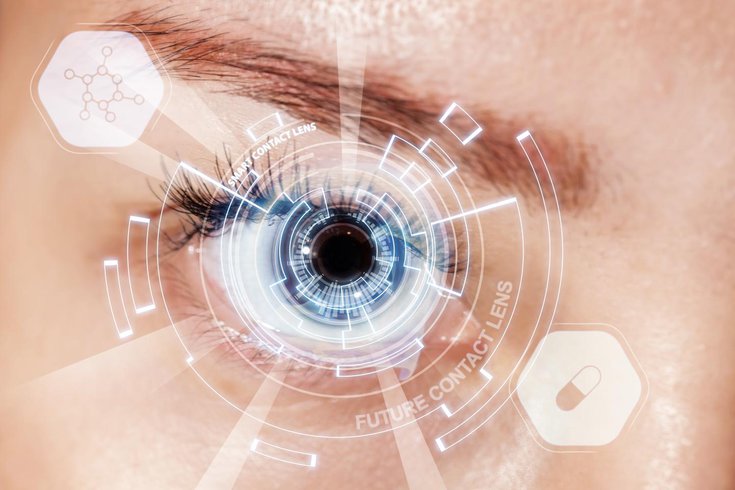
March 29, 2021
 Courtesy/Centre for Ocular Research & Education
Courtesy/Centre for Ocular Research & Education
A new report from the Centre for Ocular Research & Education highlights how advanced technology could extend contact lenses' capability well beyond refractive error correction.
An estimated 45 million Americans wear contact lenses to improve their vision without the need for eyeglasses. But these common medical devices may one day offer so much more than refractory error correction.
A new paper paints a picture of a time when contact lenses are used to detect cancer, treat disease and even replace digital screens.
The optometrist researchers involved the in the paper predict that biomarkers in the tear film of the outer surface of the eye can be used to detect and monitor both ocular diseases and systemic diseases such as diabetes and cancer.
Advanced circuit technology also may be added to contact lenses to monitor intra-ocular pressure via small alterations in corneal shape for glaucoma. It also would allow for imaging of the blood vessels in the retina, a technology that could provide early markers of hypertension, stroke and diabetes.
The paper was published in Contact Lens and Anterior Eye, the journal of the British Contact Lens Association.
"The use of contact lenses as devices to detect systemic disease has mostly focused on detecting changes to glucose levels in tears for monitoring diabetic control," the researchers wrote. "Glucose can be detected using changes in color, fluorescence or generation of electric signals by embedded sensors such as boronic acid, concanavalin A or glucose oxidase."
Researchers in South Korea have designed a chip technology to monitor glucose levels in the eye's blood vessels. It alerts users when their sugar levels are low. The device hasn't been tested in human trials yet, according to the latest report.
Contact lenses also have the potential to deliver eye medicine in a more accurate way than traditional eye drops, according to Lyndon Jones, director of the Centre for Ocular Research & Education in Canada and the new paper's lead author.
Contact lenses embedded with advanced sensing technology and drug-containing nanoparticles — referred to as theranostic lenses — could be a game-changer for people suffering from dry eye disease. They could reduce the side effects associated with dry eye medications.
"There are a range of diverse technologies that are shaping the future of contact lenses, in some cases already showing their potential in late-stage development initiatives and even commercially-available products," Jones said in a statement.
"Novel biomaterials, nanotechnology progress, unique optical designs, biosensing discoveries, antibacterial agents and even battery miniaturization and power transfer are coalescing like never before. The next several years will see incredible advancements and growth for an expanded contact lens category."
Research and development is ongoing, the experts say.
One company, Mojo Vision, has patented a contact lens with a built-in visual display that can project content from a smartphone, magnifying images for people with low vision. Another company, Innovega, is in the process of developing a soft contact lens that can project a display anywhere in the eye's vision. However, these products remain years away from being ready for consumers.
There are some so-called "smart" contact lenses currently available, according to the American Academy of Ophthalmology.
Last year, the U.S. Food Drug Administration approved the first soft contact lens for slowing myopia progress in children ages 8 to 12. The federal agency also approved the use of transition lenses, like Acuvue Oasys with Transitions, that darken in the sunlight to reduce glare.